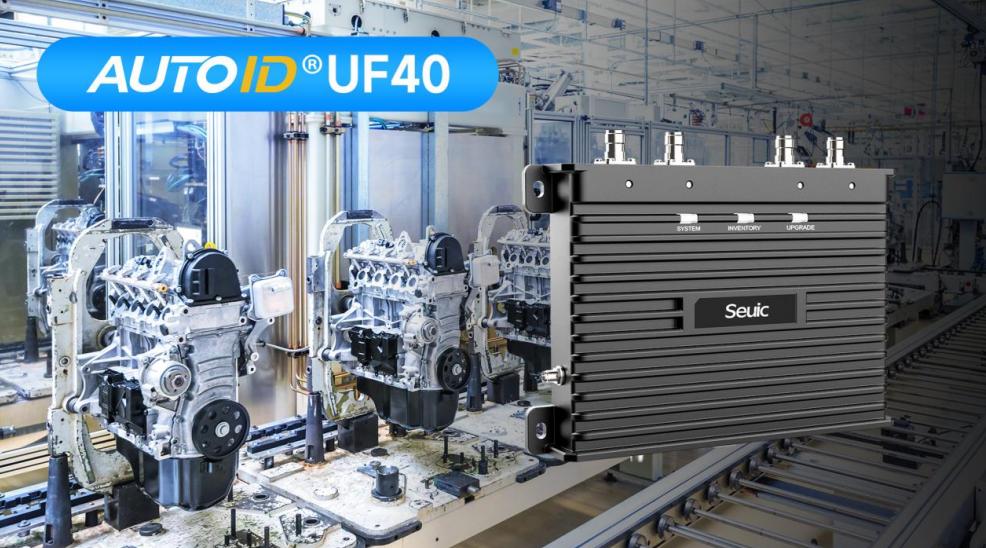Brief Introduction
In today's fast-paced manufacturing environment, inefficient scanning processes lead to costly errors, production delays, and inventory inaccuracies. Whether you are a plant manager overseeing assembly lines or a quality control expert ensuring compliance, scanning bottlenecks—such as misreads, slow throughput, or outdated equipment—undermine production efficiency. This article addresses these pain points by outlining five actionable strategies, focusing on how selecting fixed industrial scanners for your production line can boost scanning efficiency and accuracy.

1. Common Bottlenecks in Manufacturing Scanning Efficiency
Before exploring solutions, it's crucial to identify the causes of low scanning efficiency. In manufacturing, scanners are used to track parts, manage inventory, and ensure quality control. However, common bottlenecks include:
l Poor Scanner Placement: Fixed scanners installed in suboptimal locations can lead to missed reads or production line downtime.
l Outdated Technology: Older scanners may struggle to read modern barcodes (like QR codes), leading to decreased accuracy.
l Environmental Factors: Dust, vibration, or lighting issues on the production line can interfere with scanning.
l Human Error: Manual scanning processes are prone to inconsistency in high-pressure environments.
l Lack of Integration: Scanners not synchronized with ERP or MES systems create data silos, slowing down decision-making.
These issues not only affect accuracy but also increase costs.
2. 5 Key Strategies to Improve Scanning Efficiency and Accuracy
Implementing the right strategies can transform your scanning process. Here are five methods proven by industry practice:
1) Optimize Scanner Layout and Configuration
Place fixed industrial scanners at key points on the production line, such as near conveyor belts or assembly stations. Ensure their angle allows unobstructed capture of barcodes. Use adjustable mounts to accommodate different product sizes.
Key Tip: Regularly calibrate scanners based on production line speed and product flow to maintain accuracy.
2) Upgrade to Advanced Fixed Industrial Scanners
Invest in modern fixed scanners with high-resolution imaging, omnidirectional reading capabilities, and support for multiple barcode types (e.g., QR codes, DataMatrix codes). These scanners decode faster and perform better in challenging environments. When selecting a fixed industrial scanner for your production line, consider models with dust/waterproof IP ratings and integration capabilities with IoT platforms.
3) Implement Automated Data Integration
Connect scanners directly to your management systems (e.g., ERP, WMS) to enable real-time data flow. This eliminates manual data entry errors and provides instant alerts for discrepancies.
4) Train Employees on Best Practices
Even with automated systems, human oversight remains critical. Train staff on proper scanning techniques, maintenance procedures, and troubleshooting methods. Regular workshops can improve compliance and reduce errors caused by improper operation.
5) Conduct Regular Maintenance and Audits
Schedule preventive maintenance for scanners, including lens cleaning and software updates. Perform monthly audits to identify performance degradation. This proactive approach extends equipment life and ensures ongoing accuracy.
3. How to Select a Fixed Industrial Scanner for Your Production Line
Choosing the right scanner is crucial for implementing the strategies above. Here is a selection guide:
l Assess Your Environment: Consider factors like production line speed, lighting, and space constraints. For harsh conditions (e.g., welding areas), choose scanners with rugged designs.
l Evaluate Technical Specifications: Focus on decode speed (e.g., 1000 scans/second), resolution, and supported barcode types. Match these specifications to your product volume and barcode types.
l Check Integration Capabilities: Ensure the scanner complies with industry standards (e.g., ISO) and can integrate with your existing software.
l Consider Total Cost of Ownership: Look beyond the initial price to include maintenance, support, and scalability. Choose suppliers with proven reliability.
l Test Before Buying: Request a pilot deployment to validate performance in your specific setup.
4. Implementation Guide: Putting Strategies into Practice
To turn these strategies into action, follow these steps:
l Audit Current Processes: Map your production line to identify scanning weak points.
l Set Clear Goals: Define metrics, such as "reduce misread rate by 20% within 6 months."
l Pilot the Solution: Start with a small section of the production line to test the scanner upgrade.
l Train and Deploy: Provide comprehensive training to staff while rolling out changes fully.
l Monitor and Optimize: Use analytical tools to track improvements and make adjustments.
5. Applications of Fixed Industrial Scanners Beyond Manufacturing
Fixed scanners are versatile and benefit other industries mentioned in the target audience, for example:
l Retail and Logistics: In warehouses, they accelerate sorting and reduce shipping errors.
l Healthcare: Hospitals use them to track medical supplies, enhancing patient safety.
l Utilities: Field inspectors use scanners for meter reading, improving data accuracy.
This cross-industry relevance highlights the importance of selecting the right scanner for long-term value.
Improving scanning efficiency and accuracy is not just about technology; it's about adopting a holistic strategy that includes optimized scanner selection, integration, and continuous improvement. By following the five strategies outlined in this article, you can transform your production line into a model of efficiency. Remember, the key is to start with a comprehensive assessment and select fixed industrial scanners that meet your unique needs.
- 5 Strategies to Enhance Manufacturing Scanning Efficiency and Accuracy: A Practical Guide2025-11-28
- Improving Inventory Accuracy with Handheld Scanners: The Complete Guide to Precise Inventory Management2025-11-27
- Solving Inventory Accuracy Issues with UHF RFID: A Complete Technical Guide2025-11-27
- Revolutionary Breakthrough in RFID Asset Management: AUTOID UTouch 2-S Achieves Second-Level Inventory During Movement2025-11-27
- Smart Handheld Terminal for 3C Industry: Seuic CRUISE2 5G Solutions2025-11-26